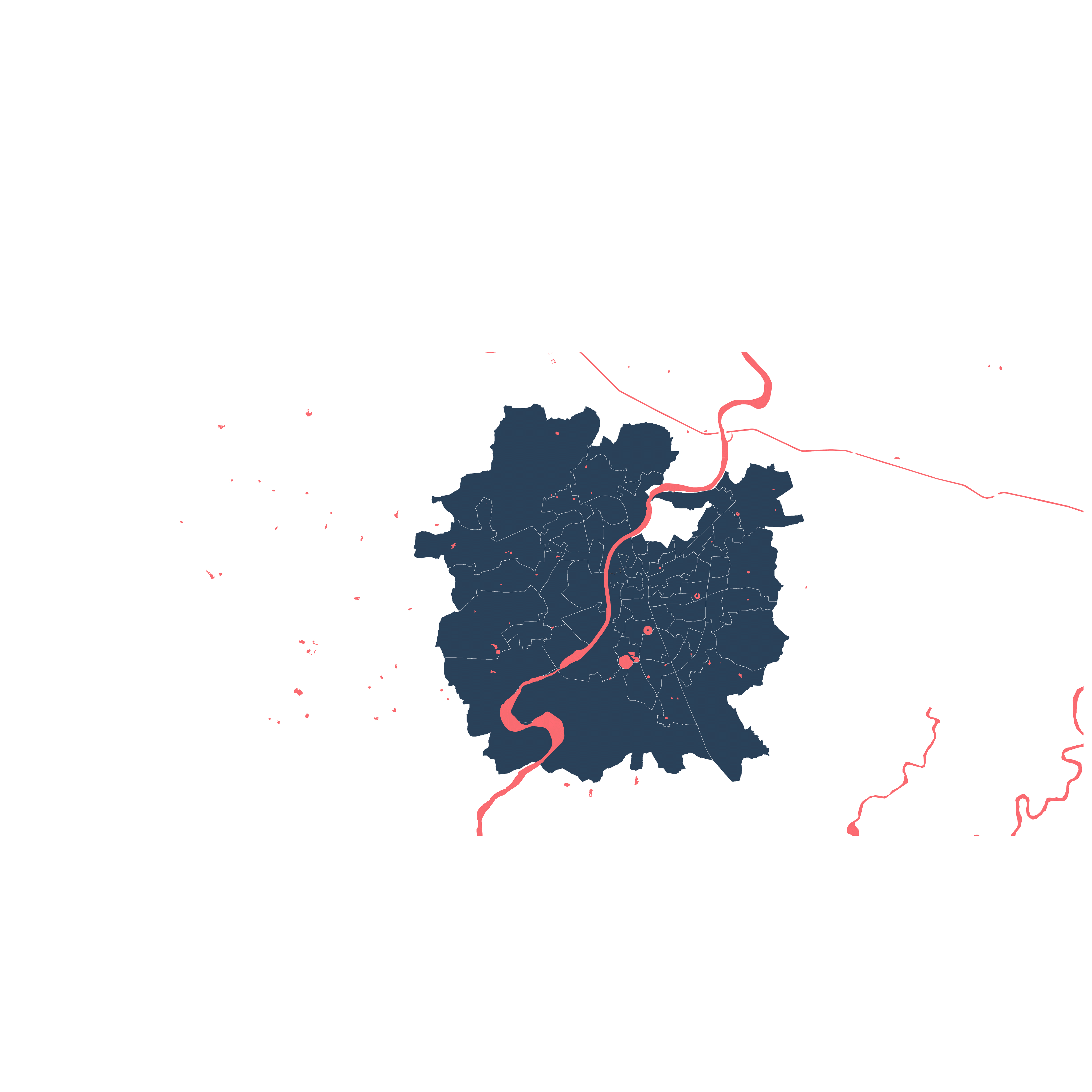Simultaneous Stories So Far...
Urban Assemblies: the vacancy Phenomenon
Greenbelt of Ahmedabad
Planning process byproduct

Story so far
Simultaneous Stories So Far...
Urban Assemblies: the vacancy Phenomenon
Greenbelt of Ahmedabad
Planning process byproduct

Story so far
The Concept of garden city and green belt of Ebenezer Howard was popularly applauded as a utopic radical idea but failed to deliver expected results when realized. In Ahmedabad, industrialization was at its peak and so was the migration of people to the city. The city kept growing without much planning and direction. Hence, the idea of a greenbelt seemed a suitable option for controlling Ahmedabad's urban sprawl, accommodate a growing economy, and as green lungs for the city amidst the industries. The development plans were laid out however they were myopic in terms of future needs, growth of urban boundaries with increasing population. Not to mention the preferences of the elites to move beyond the western boundaries in the suburbs and the desperate needs of the urban majority.
The lack of policies for protecting the greenbelt, inconsistent policy framework which is always under amendments as per the need of the time and ongoing compensation battles, and erratic decisions of the Development Plans for Ahmedabad. As a result, the city sprawled haphazardly, beyond the limits of the city, encroachments happened in the land which was vacant for years before it was nullified. The making of the greenbelt was rather short compared to the unmaking of the greenbelt. During the time, India was still in the process of making and implementing city administration and development plans which lacked experience and foresight.
Ironically the process allowed them to change their intentions with the same process of land reservation under agriculture and green cover to develop them in the coming years, ‘a paradigm shift’ of urbanization. Precisely the antithesis of greenbelt.




2) A road parallel to railway track is proposed which passes through the plot splitting the plot into 2 parts.

3) School was built on the plot in 2000. No special permission was required.
-The school used the neighboring plots for activities such as band practice, assembly, sports, etc.
- no rent was charged
- informal settlement present near the railway tracts.

4) After the settlement of the case in 2013, green belt has developed rapidly.
-According to the TP scheme, a new road and widening of the existing road has been mentioned near the school which cuts through the plot.
-The school was given a 3 months notice and any function of the school had to be shutdown.
-Government will provide the owner new land in compensation of the current land.
The choices given to the owner are:
Land to be given equal to the current land size, the cost of the land might differ.
Land to be given by the cost of the current land, the new land might differ in size.

5) The owner is relocating the school at a different plot on the same green belt.

1) Plot located along railway track near new vadaj circle, Pragatinagar.

Land is reserved as Agriculture zone or as green reserved land so no development can take place for some time and government gets some time to prepare DPs to direct the development in that direction

Informal developments and settlements are allowed to creep in with no interfere from the government to restrict them or very minimal effort is put.

In certain cases, where roads are proposed as connections in these agriculture zones, development is allowed again, which takes place along these roads.

Pressure on the government to provide water, sewer and other infrastructural connections to such developments.
These informal development is either regularized or new TPs with new development is prepared.
Over the years, the reserved land is completely developed.
Potential Sites
Malav Talav
-
Waterbody on the site, as a neighbourhood attractor
-
High FSI is given in this area (till 4 in some parts)
-
Neglected waterbody because of vacant land?
-
Organized settlement with different types of land uses like restaurant's etc.
-
Jivraj park hospital as a city level health infrastructure
References
Ahemdabad Urban Development Authority. (2021, January 28). Retrieved from AUDA: http://www.auda.org.in/RDP/
Ahmedabad municipal corporation vs. Ahmedabad green belt khedut mandal and ors. (1947, may 9). Retrieved from
Ballaney, S., Bertaud, M. A., Annez, P. C., Koshy, C. K., Nair, B., Patel, B., & Phatak, V. (2013). Inventory Of Public Lands in Ahmebad, Gujarat, India. Ahmedabad: HCP.
Chauhan, B. (1947, May 9). Retrieved from Ahmedabad Municipal Corporation ... vs Ahmedabad Green Belt Khedut: https://indiankanoon.org/doc/98907037/
Government, M. (2018). Directorate Of Town Planning and Valuation Department . Retrieved from https://dtp.maharashtra.gov.in/en/background-of-the-act
Gujarat, G. o. (2016, July 13). Town Planning and Valuation Department. Retrieved from Micro Level Planninf (Town Planning Scheme): https://townplanning.gujarat.gov.in/planning-development-policies/micro-level-planning.aspx
HCP. (n.d.). AUDA Development Plan 2021. Retrieved from https://www.hcp.co.in/project/auda-development-plan-2021
Niraj, J. (2007). Development strategies for urban vacant land:A Case study of “Green Belt” in Western Ahmedabad. Ahmedabad: CEPT University.
Singhal, A. (2018). Making and Unmaking of greenbelt: case of Ahmedabad. CEPT University.
Stephens, R. (2018). From the skies, an architect retraces a century-old survey of Ahmedabad’s City Walls. Ahmedabad.
Thakker, H. (2014). Land pooling and Land Management. ICIER.
(2013). Town Planning Schemes for Greenbelt Zone Cleared. Ahmedabad: Times Of India.
Wilson, P. N. (n.d.). Land Use transformation along BRT corridor-Ahmedabad. Ahmedabad: CEPT University.
Urban Assemblies : Simultaneous Stories So Far...
Planning Policy Outcomes - Drashti Thakkar | Jaimin Bali | Nitya Patel


.jpg)